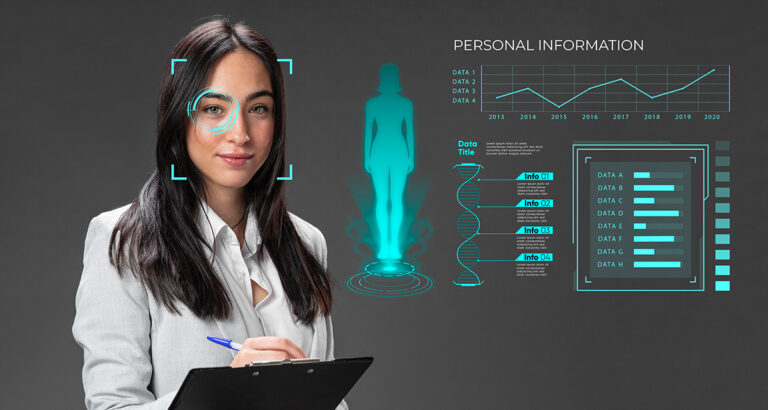In a cancer ward in Boston, a radiation oncologist waits for complex software to finalize a treatment plan, hoping to deliver a dose precise enough to destroy tumor cells while sparing healthy tissue. In a genomics lab in Mumbai, a research fellow spends weeks parsing gene expression data to identify patterns linked to metabolic disorders. In a pharmaceutical lab in Zurich, molecular simulations crawl forward at a glacial pace, searching for the next breakthrough compound. These aren’t failures of ambition. They are failures of computation.
The modern healthcare system, for all its sophistication, is facing a silent computational bottleneck. Medicine today generates more data, requires more complex decision-making, and demands more personalized care than ever before. And yet, the tools we use to manage it—however powerful—are fundamentally limited by the architecture of classical computers.
But what if there was a new kind of machine? One that doesn’t just calculate faster but thinks differently—one that could analyze a million molecular interactions at once, simulate entire organs, or detect the earliest traces of disease hidden within a patient’s DNA? That machine exists. It’s called a quantum computer. And it may just change everything.
What Makes Quantum Different
Unlike classical computers that run on bits—units of information that are either 0 or 1—quantum computers operate with qubits, which can exist in a superposition of states. A qubit can be both 0 and 1 at the same time. This overlapping state allows quantum systems to explore multiple solutions to a problem simultaneously. When combined with another strange quantum property called entanglement, where two qubits can influence each other instantly across distances, the computational potential becomes exponential.
Quantum computers don’t just speed up calculations. They redefine how we approach problems involving vast amounts of data and variables. For medicine, this means rethinking how we design drugs, simulate biological systems, predict disease, and personalize treatment.
From Feynman’s Dream to Today’s Breakthroughs

The origin of quantum computing lies not in medicine, but in physics. In the early 1980s, Richard Feynman observed that classical computers were fundamentally ill-equipped to simulate quantum systems, such as molecules or atoms. His vision of a machine that followed the rules of quantum mechanics laid the foundation for a new era of computation.
That vision was realized, in part, by Peter Shor in the 1990s. Shor developed an algorithm capable of factoring large numbers exponentially faster than classical computers, raising the prospect that quantum systems could outperform traditional ones on specific problems. Though it was a theoretical breakthrough, it made practical applications imaginable.
Hardware development caught up slowly, but steadily. The early 2000s brought innovations in quantum error correction, which helped stabilize fragile qubits. Then came the milestone of 2019, when Google’s Sycamore processor achieved quantum supremacy, solving a problem in seconds that would take a classical supercomputer thousands of years. The experiment wasn’t medical, but it was a proof of power—and healthcare researchers took notice.
Drug Discovery Reimagined
In traditional drug discovery, the simulation of molecules—how they move, how they fold, how they bind to biological targets—is a monumental task. Every new molecule adds layers of complexity. For certain compounds, the combinations of atomic interactions are so vast that even the world’s best supercomputers require weeks or months to run simulations.
Quantum computers, by contrast, are naturally suited for these tasks. They model molecules by following the same quantum laws that molecules themselves obey. Algorithms like the Variational Quantum Eigensolver can determine a molecule’s lowest energy state, a critical factor in assessing how a drug will interact with its target.
This isn’t theoretical anymore. Companies such as Biogen and Accenture Labs are already collaborating to use quantum tools in the search for Alzheimer’s treatments. Moderna is partnering with IBM to apply quantum systems to better understand the molecular structure of mRNA, potentially accelerating the development of next-generation vaccines. Quantum systems don’t just cut the time required for simulations. They make simulations possible that were once entirely out of reach.
The Genetic Code Meets Quantum Speed
Sequencing the human genome was once a Herculean task. Today, it’s routine. But decoding the interplay of those genes—the way they influence one another, respond to environmental triggers, and affect disease progression—is still a computational nightmare.
Quantum computing is well positioned to change that. Quantum algorithms can analyze complex datasets with thousands of interacting variables, such as those found in genomics. Instead of analyzing one interaction at a time, a quantum system can process many layers simultaneously. This opens the door to a truly personalized approach to medicine. Imagine being able to predict how a cancer patient’s tumor will respond to immunotherapy based on their unique genetic profile. Or preemptively identifying a cardiovascular risk decades before the first symptoms appear—not just through biomarkers, but by modeling how a patient’s genes interact with their environment and lifestyle.
Projects like Q4Bio and research centers in Cambridge are already using quantum systems to study genetic variation at scale. These efforts are expected to improve the diagnosis and management of conditions like cancer, Alzheimer’s, and rare genetic disorders.
Radiotherapy Enters the Quantum Age
In radiation oncology, planning a treatment involves balancing two competing needs: targeting the tumor with sufficient intensity while sparing surrounding healthy tissue. The Monte Carlo method, a gold-standard simulation technique, models how radiation particles interact with human tissue. It does so by tracing millions of possible paths each photon might take. But Monte Carlo simulations are time-consuming. It’s not unusual for a single case to take several hours to process, even on modern supercomputers.
Quantum computing offers a better way. By using quantum versions of Monte Carlo simulations, researchers have already shown that they can significantly reduce the time needed to generate accurate radiotherapy plans. In early clinical trials, these systems not only accelerated planning but improved precision—reducing margins and potential side effects. This could eventually lead to adaptive radiotherapy, where treatment plans are recalculated in near real-time based on changes in the tumor or the patient’s anatomy between sessions.
Seeing Deeper with Quantum Imaging
Quantum mechanics is not only useful in computing—it’s changing imaging too. In particular, quantum sensors offer a new level of precision in detecting magnetic fields, molecular signatures, and structural abnormalities. One area of development is quantum-enhanced MRI. These systems use entangled photons and other quantum properties to create images with higher resolution and less noise. This allows for earlier detection of diseases like cancer or multiple sclerosis, where current imaging modalities sometimes miss the earliest signs.
Quantum contrast agents are also being explored. These are designed to interact with disease-specific biomarkers, lighting up conditions that would otherwise be invisible. Imagine an MRI that doesn’t just show a lesion, but reveals whether that lesion is benign, malignant, or even precancerous—without a biopsy. Such technologies are already in development. As they mature, they may fundamentally redefine how radiologists and clinicians interpret images.
Smarter AI, Powered by Quantum
Artificial intelligence has made major inroads in healthcare. From triaging chest X-rays to recommending chemotherapy regimens, AI is becoming a common tool in clinical practice. But as models grow more sophisticated, they also require more computational power—especially when dealing with incomplete or messy data. Quantum machine learning offers a new frontier. Unlike classical AI, which processes data sequentially or with brute-force parallelism, quantum-enhanced models can analyze multidimensional patterns simultaneously. This makes them particularly well-suited to spotting subtle signals hidden in complex medical datasets.

In one pilot study, a quantum AI system was able to detect early signs of diabetic retinopathy in fundus photographs with higher sensitivity than traditional convolutional neural networks. Other research has shown promise in EEG analysis for seizure prediction and in genomic classification for inherited disorders. What makes these models powerful isn’t just speed—it’s nuance. They can recognize relationships that don’t emerge in traditional analysis, helping doctors make earlier and more informed decisions.
Data, Security, and the Quantum Threat
With the power of quantum computing also comes a challenge: data security. Today’s encryption methods rely on mathematical problems that are hard for classical computers to solve—like factoring large numbers. Quantum algorithms, such as Shor’s, can solve these problems with ease. This poses a potential threat to patient data, EHR systems, and even secure hospital networks. If quantum systems become widespread before new cryptographic standards are adopted, healthcare institutions could be vulnerable.
To counter this, efforts are underway to develop quantum-safe encryption. These new standards will need to be robust enough to withstand both classical and quantum attacks, ensuring that sensitive patient information remains protected.
Security isn’t the only concern. Ethical questions loom large. How do we ensure that quantum algorithms are transparent and explainable? How do we prevent bias from creeping into quantum-trained AI? And how do we ensure equitable access to these tools, so that quantum medicine doesn’t become the privilege of only the wealthiest institutions? These are questions not just for physicists, but for doctors, ethicists, and policymakers as well.
The Hybrid Era: Quantum and Classical, Together
Despite its promise, quantum computing isn’t ready to replace classical systems in hospitals. But it doesn’t need to. The future likely lies in hybrid systems—where classical computers handle day-to-day operations, and quantum processors tackle specific challenges. These quantum-classical hybrids are already being tested in pharmaceutical simulations, genomic modeling, and diagnostics. They work by offloading the computationally intensive parts of a task—like protein folding or dose optimization—to quantum co-processors, while maintaining the rest of the workflow in a familiar classical environment.
Such systems could be accessed via secure cloud platforms. A community hospital in Argentina, for example, might one day run a simulation on a quantum processor housed at IBM, just as doctors today access telepathology or cloud-based PACS archives. These partnerships allow institutions to benefit from quantum power without needing to invest in cryogenic labs or quantum engineers. They also make it easier to gradually incorporate quantum solutions into clinical practice.
What Doctors Can Do Today
While the technical aspects of quantum computing may feel far removed from clinical practice, its impact on healthcare is already taking shape. Understanding its potential—and its limitations—is becoming part of the modern physician’s literacy.
Engagement begins with curiosity. Clinicians can follow quantum research in medicine through journals, webinars, and partnerships with academic institutions. Hospitals can prepare by ensuring their IT infrastructure is flexible enough to integrate quantum-classical systems as they mature. And doctors can be advocates for equity, pushing for open platforms and ethical guidelines that ensure quantum tools are developed with fairness and patient safety in mind.
The Future Will Be Quantum
Medicine has always advanced in leaps. The microscope, the X-ray, antibiotics, genomics—each transformed the landscape. Quantum computing may be the next such leap. Not because it replaces the art of medicine, but because it expands its reach. It allows us to simulate nature with unprecedented fidelity, to predict outcomes before they unfold, and to see patterns invisible to the human eye. It offers not just faster results, but better ones—more personalized, more precise, and more powerful. As this technology moves from the lab to the clinic, one thing is clear: the quantum revolution in medicine is not a question of if, but when. And when it arrives, it will not be a distant hum in the server room, but a new pulse in the heart of healthcare.





